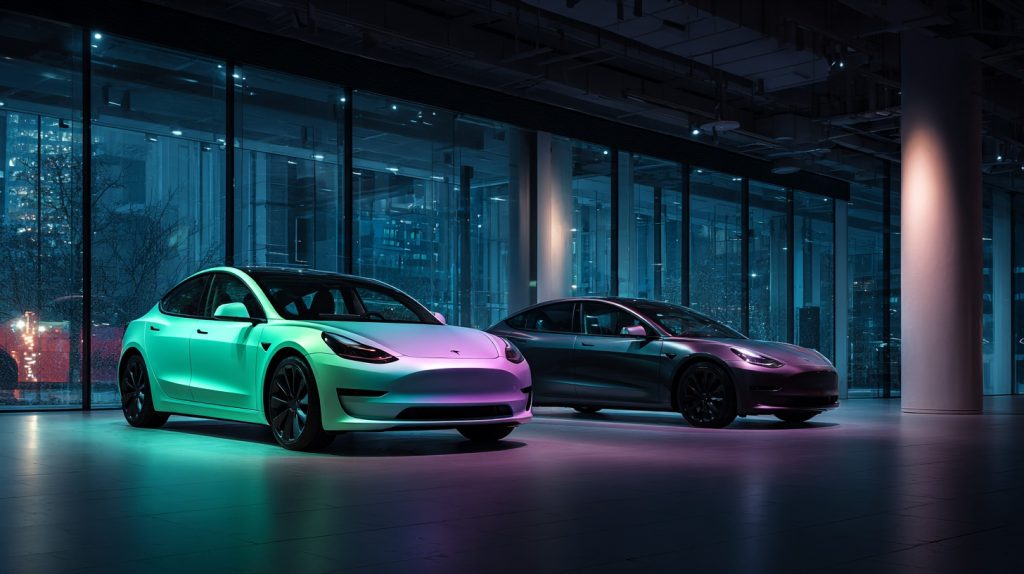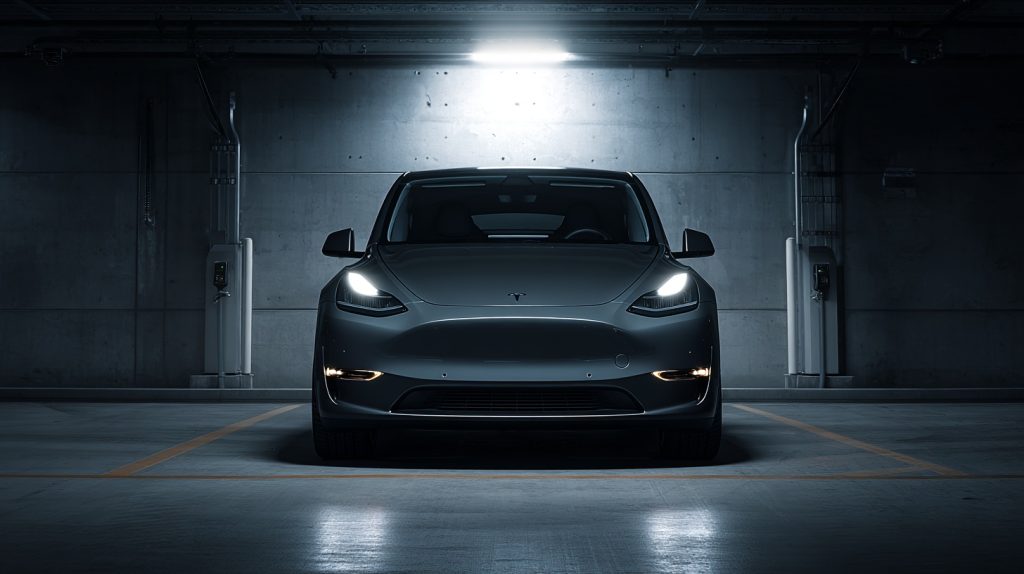
Table of Contents
Tesla Cheaper Model Y and Model 3: Shocking Price Cut Reality
Tesla Cheaper Model Y and Model 3 versions have finally arrived, but the announcement comes at a precarious moment for Tesla. The company is grappling with slumping sales, intensifying global competition, and the recent expiration of the $7,500 federal EV tax credit that had propped up demand for years. CEO Elon Musk’s erratic political theater, from his brief stint in the Trump administration to his support for far-right movements across Europe, has alienated core customers and tarnished the brand’s once-progressive sheen.
Tesla Cheaper Model Y and Model 3 Price Cut Doesn’t Go Deep Enough
The new “Standard” Tesla Cheaper Model Y and Model 3 save buyers roughly $5,000 compared to the previous entry-level “Premium” versions. But that’s hardly the revolutionary affordability Musk has been promising since 2018, when he first teased a $25,000 Tesla that would democratize electric transportation.
“I was definitely hoping for a more affordable Tesla in the sub-30k range,” Shawn Campbell, an advisor at Camelthorn Investments, told Reuters. “I just don’t know that this is enough.”
The math tells the story with these Tesla Cheaper Model Y and Model 3 releases. With the federal tax credit now gone, Tesla’s effective prices have actually increased for American consumers. The Model 3 Standard, at $36,990, costs more than the previous base model did with the $7,500 credit applied. It’s a pricing sleight of hand that might goose short-term numbers but does little to address the structural affordability crisis facing the EV market.
Dan Ives, a longtime Tesla bull at Wedbush Securities, expressed disappointment that the price point was “only $5k lower than prior Model 3’s and Y’s.” The announcement, he noted, represents “the first step to getting back to a ~500k quarterly delivery run-rate,” but falls short of the transformative product launch investors had anticipated.
What You Lose in the Tesla Cheaper Model Y and Model 3 Versions
To hit the lower price points, Tesla stripped out features that had become synonymous with the brand’s premium positioning. The Tesla Cheaper Model Y and Model 3 Standard versions eliminate the panoramic glass roof, the LED light bars, the second-row touchscreen, and the ambient lighting. Buyers get cloth seats instead of vegan leather, manual side-view mirrors instead of power-adjustable ones, and seven speakers instead of 15.
More significantly, the Tesla Cheaper Model Y and Model 3 Standard models lack Tesla’s “Autosteer” function, the driver-assist feature that’s been central to the company’s self-driving narrative. They’re limited to basic “traffic-aware cruise control,” a step backward in a market where advanced driver assistance is increasingly standard even in budget vehicles.
The battery range drops to 321 miles from 357 miles in the Long Range versions. Acceleration slows. The suspension downgrades from frequency-dependent to passive shock absorbers. It’s a car that feels less like a Tesla and more like a conventional automaker’s attempt to hit a price target.
“It’s basically a pricing lever and not much of a product catalyst,” said Shay Boloor, chief market strategist at Futurum Equities. “I don’t see it as unlocking new demand at scale. You’ll get some volume lift but mostly from buyers trading down from the premium trims.”
The Bigger Picture: A Company Adrift Beyond Tesla Cheaper Model Y and Model 3
The tepid reception to Tesla Cheaper Model Y and Model 3 reflects deeper anxieties about the company’s direction. Musk has spent years pivoting away from the core automotive business toward speculative ventures in robotaxis, humanoid robots, and artificial intelligence. The promised next-generation Roadster, first teased in 2017, remains vaporware. The Cybertruck, finally delivered in late 2023 after years of delays, has been subject to eight voluntary recalls and never achieved the cultural cachet of the Model 3 or Model Y.
Meanwhile, the competitive landscape has shifted dramatically. Chinese automaker BYD is poised to surpass Tesla as the world’s largest EV seller. In Europe, where Musk’s political antics have sparked widespread protests and acts of vandalism at Tesla dealerships, more than a dozen electric and plug-in hybrid models are available below $30,000. Hyundai just announced EVs priced as much as $9,800 below previous versions.
Tesla’s sales tell the story. The company reported record drops in the first two quarters of 2025. While third-quarter deliveries spiked to 497,099 units, analysts attribute the surge to buyers rushing to claim the expiring tax credit, not to organic demand. CFO Vaibhav Taneja acknowledged as much, noting a “pull forward of sales” ahead of the credit’s expiration.
The Political Fallout Undermines Tesla Cheaper Model Y and Model 3 Appeal
It’s impossible to discuss Tesla Cheaper Model Y and Model 3 struggles without addressing the Musk factor. His role in the Trump administration’s Department of Government Efficiency, his amplification of conspiracy theories on X (formerly Twitter), and his support for far-right political movements have fundamentally altered how consumers perceive the brand.
Tesla was once the car of choice for environmentally conscious progressives, a symbol of technological optimism and climate action. Now it’s become a lightning rod, associated with a billionaire whose net worth recently crossed $500 billion while he wages culture wars and undermines democratic institutions.
Musk’s subsequent split from Trump hasn’t repaired the damage. If anything, it’s alienated Trump supporters who’d briefly warmed to Tesla, while doing little to win back the progressive customers who’d fled. The brand is caught in a political no-man’s-land of Musk’s own making.
“For the market, this is Tesla dropping its Steve Jobs turtleneck and slipping into a Walmart hoodie,” said Michael Ashley Schulman, chief investment officer at Running Point. “It’s no longer the cool rebel at the edge of innovation. It’s the establishment trying to play both Tesla and Toyota at once.”
The Road Ahead for Tesla Cheaper Model Y and Model 3 Strategy

Tesla Cheaper Model Y and Model 3 will likely generate some incremental sales, particularly in states like New York where local EV incentives can push the effective price of the Model 3 Standard down to $34,990. But they don’t solve the fundamental challenges facing the company: an aging product lineup, intensifying competition, political baggage, and a CEO more interested in robots and rockets than cars.
The announcement also highlights a troubling pattern. Musk has spent a decade promising affordable EVs, only to repeatedly abandon or delay those plans in favor of flashier projects. The $25,000 car was scrapped. The Roadster remains a concept. The robotaxi fleet still requires human safety drivers, unlike competitors like Waymo and Baidu’s Apollo Go.
“Tesla’s decision to roll out lower-priced versions of the Model 3 and Model Y is a step in the right direction, but it may not be enough given the current EV landscape,” said Jacob Bourne, an analyst at eMarketer. “Given the tougher market, tighter competition, and Tesla’s reputational setbacks, the automaker shouldn’t give up on past promises to deliver an even more affordable model.”
Final Verdict on Tesla Cheaper Model Y and Model 3
The question now is whether Tesla can execute on its grander ambitions while its core business erodes. The company still relies overwhelmingly on automotive sales, which account for 46% of revenue from the US market alone. If those sales continue to slide, no amount of AI hype or robot demonstrations will compensate.
For now, Wall Street has delivered its verdict on the Tesla Cheaper Model Y and Model 3 launch. A $5,000 price cut isn’t a strategy. It’s a stopgap. And in a market moving this fast, stopgaps don’t cut it. The Tesla Cheaper Model Y and Model 3 gambit may attract some budget-conscious buyers, but without addressing the deeper issues of innovation, competition, and brand perception, these stripped-down versions feel more like a retreat than a revolution.